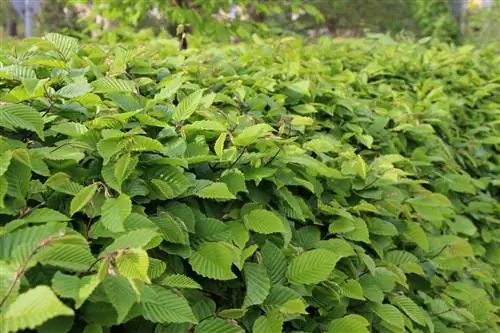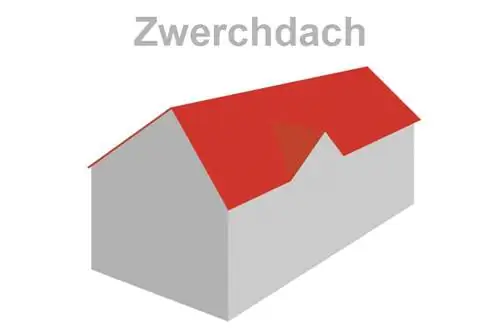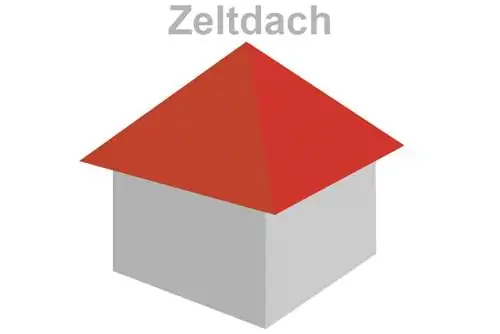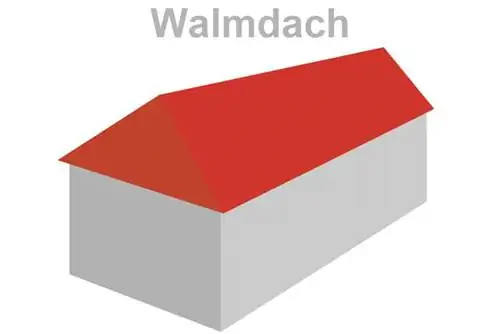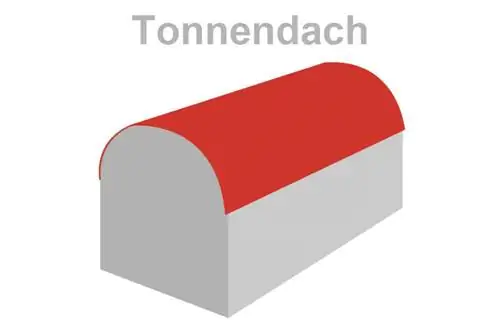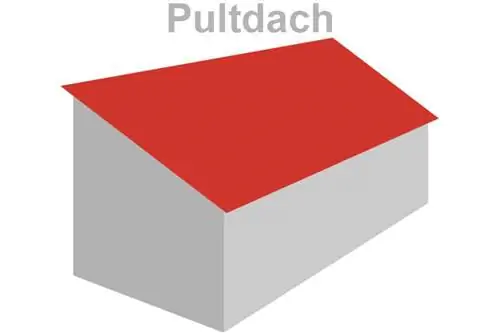- Author admin [email protected].
- Public 2023-12-17 03:39.
- Last modified 2025-06-01 06:48.
There are many different ways to visually delimit, structure or spatially design a garden or property. Trees are a possibility, fences and walls. Hedges are popular design elements and often have practical uses, but they also have disadvantages.
Hedges need care and are not suitable for every location
Most hedge plants want humus-rich, moist soil, need sun to partial shade and do not do well in barren terrain. So it is first of all a question of the location whether a hedge can be planted or not. Like all plants, hedge-forming shrubs and trees also need care; they need to be watered in dry summer weeks, need to be fertilized from time to time, and need to be cut back once or twice a year. If you want a shapely and well-maintained hedge, you will probably use scissors more often. Hedges are natural habitats. They attract animals: insects live in and on the leaves and flowers, birds feed on the fruit of the hedge and the insects that live in it. Maggots, worms, beetles and other small animals populate branches, trunks and root areas. They in turn attract predators - bats and birds, but also voles, hedgehogs, martens, polecats, rats and other animals feed on them.
If the hedge is close to a window or door, it is likely that one or two animals will get into the house, because the animals' radius of action is sometimes quite large. Another disadvantage of hedges is that, unlike fences and walls, they can attract pests that sometimes attack neighboring plants. These include fungal infections and aphids, as well as wasps that lay their eggs in the leaves. It takes a lot of care to keep the hedges he althy and to limit the spread of infections in the event of an infestation.
Summer green or evergreen - sweeping leaves or privacy protection even in winter?
Hedges are a natural privacy screen that is relatively long-lasting and inexpensive - this is exactly where the advantages of hedges lie. However, some hedges require more work than others: Evergreen hedges look beautiful in summer and winter, but are sometimes sensitive to frost and take up a lot of light at any time of the year. In summer it might be nice to sit in the shade of a green (hopefully not too prickly) hedge - in winter it can be annoying when the last bit of daylight is taken away by the dense hedge.
Summer green hedges can grow dense enough to provide at least marginal privacy through the branches even in winter. European beech and hornbeam come into question. However, the trees shed their leaves in autumn: the leaves have to be swept up, otherwise they will soon be quite high and even pose a danger on sidewalks and streets. But sweeping the leaves once isn't enough, because the leaves fall over several weeks. Animals that live in the hedges cause further contamination. Bird droppings and the remains of insects contaminate nearby parked cars, near house walls and, in some cases, everything that is next to the hedge. That can be quite annoying. However, this problem also affects evergreen hedges.
Yew, cypress and holly: Some plants are poisonous
There are an incredible number of trees and bushes that grow dense enough to serve as a hedge. Not all of them are native to Germany, and not all of them are non-toxic. Anyone who has children or lives near a school, kindergarten or after-school care center should think carefully about which plants are really suitable as a hedge on the property line. Because poisonous plants can be dangerous, not all of them cause harmless headaches. Some plants, when distorted, are deadly. These include the yew and boxwood among the native hedge plants, and the arborvitae, holly, false cypress and cherry laurel among the introduced and widespread species. Privet and copper beech, on the other hand, are non-toxic. In autumn, the common beech produces beechnuts, which are edible but contain small amounts of hydrogen cyanide. Just a handful of beechnuts can cause discomfort. The leaves of the common beech are also edible. The hornbeam, which is actually a birch tree, is also completely non-toxic and native - this also applies to the field maple.
Plant native plants better
Of course there are some exotic plants that are, firstly, very resilient and, secondly, beautiful as hedges. If these species are not native to Germany, planting them as hedges in the garden is a disadvantage because there is always the risk that the plants will spread uncontrollably. Especially with larger hedgerows, it is impossible to control whether seeds are blown away by the wind, carried away by animals, where they germinate and whether they might threaten native species. That sounds very far-fetched at first, but there are actually plants available on the market and already introduced that are actually not allowed to be kept outdoors so easily due to German nature conservation regulations.
For example, arborvitae and false cypresses, holly, cherry laurel and firethorn are not native. However, the firethorn is now being planted as a bird habitat; thanks to its thorns and dense growth, it offers safe nesting places that cats, martens and other predators cannot reach. The firethorn berries are edible by local birds, making the hedge a valuable feeding place in winter. Various species of barberry (a hardy but only summer-green shrub) are native to Germany and also provide a habitat for birds and insects.
Tips for speed readers
- Most hedge plants need humus-rich, slightly moist soil and partially shaded to sunny locations.
- Hedges need to be trimmed once or twice a year (depending on growth), possibly more often.
- In dry summer weeks, the plants need to be watered and fertilized every now and then.
- Hedges attract animals, which on the one hand are desirable (environmental protection), but on the other hand cause pollution. Insects in particular can be annoying.
- Summer green hedges don't take away too much light, but leaves need to be swept in autumn. Wintergreen hedges still take up space even in low-light winters and shade the windows behind them.
- Poisonous hedge plants are a source of danger in gardens with children that can have fatal consequences.
- Non-native hedge plants can spread undesirably and become an ecological problem.
- Advantages: Hedges are inexpensive and long-lasting, provide a habitat for local animals, contribute to climate protection and sometimes provide edible food.
Other advantages and disadvantages of hedges
Advantage: visibility and noise protection
Red deer, fallow deer and small game increasingly seek cover behind hedges in a structurally poor agricultural landscape. This privacy protection is also perceived as positive by people, for example in residential areas and in “buffer zones”. Richly structured hedge landscapes are often described with positive values such as “beautiful”, “idyllic”, etc., are viewed as ideal and are often used for relaxation. Several hedges standing one behind the other on traffic roads also provide good sound insulation. In contrast, it should be viewed critically that game scurries from cover to cover and therefore often falls victim on roads that are covered in grass.
Disadvantage: need to cut back
Hedges are no longer used to produce firewood today. This eliminates the need for pruning necessary for rejuvenation. The care of hedges must therefore be carried out consciously today, as over-aged hedges only provide home to a significantly smaller number of species in terms of the biotope network. If the hedge and especially its edges are not cared for regularly and professionally, it will develop into a series of large trees. The species-rich edge becomes bushy without any care; Larger trees grow that are often delimbed because of adjacent uses: the edge disappears.
Advantage: Improve soil fertility
Due to the fall of leaves and the dying perennials of the border, the soil around the hedge becomes enriched with raw humus in autumn. The ratio of the two elements carbon and nitrogen is improved in favor of the former and thus leads to improved nitrogen fixation. However, farmers often fear on grassland sites that the fall of leaves in autumn could suppress forage grasses and encourage a change in plant communities towards more herbs. In the long term, the folded soils, locations of former hedges, resulted in higher soil fertility than on adjacent arable land.
Disadvantage: shadows
Shadowing leads to a distinction between the side exposed to the sun and the side in the shade. Lower warming on the shady side is often viewed as negative because, for example, grain ripens more slowly there than on sunny areas. This problem can be avoided in natural farming by caring for the wild weed edges and by creating field edge strips.
Advantages and disadvantages: Increased evaporation
Woods evaporate more water (botanically: transpiration) than herbaceous vegetation; in summer, daytime temperature maximums are reduced and temperature minimums are increased due to reduced radiation and latent heat; At the same time, the higher suction tension of the hedge (trees) causes a shortage of water for adjacent vegetation. Arable crops are affected when there is no hem. The development of a dry hem is favored.

